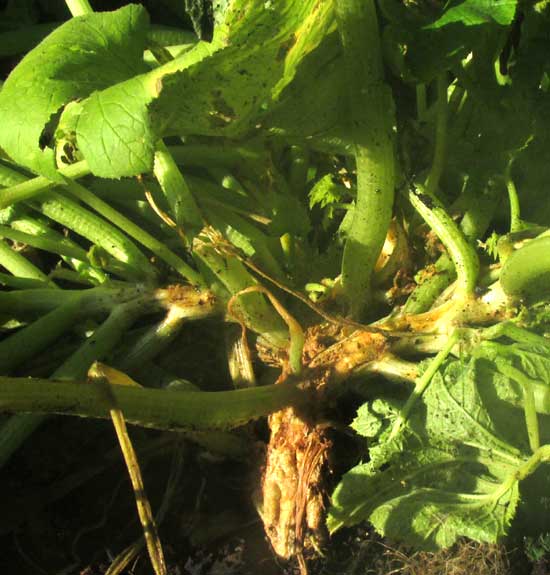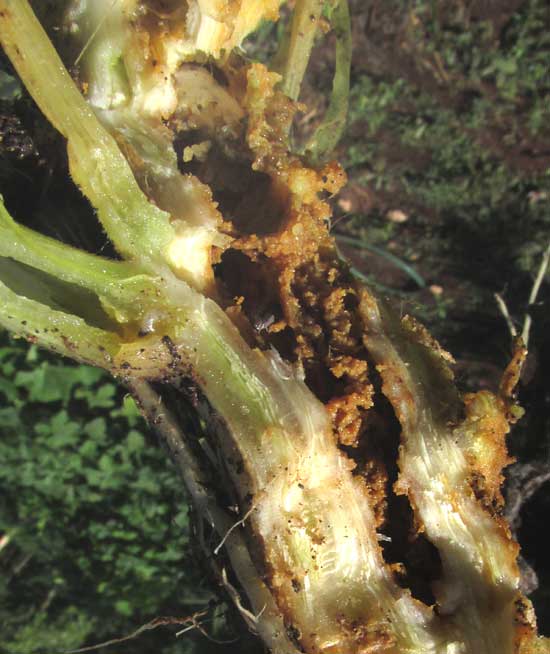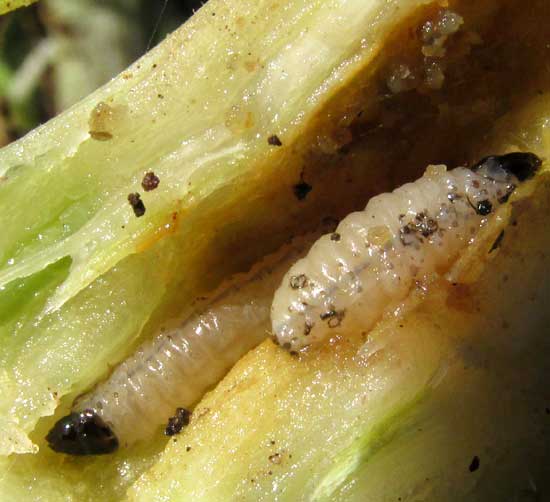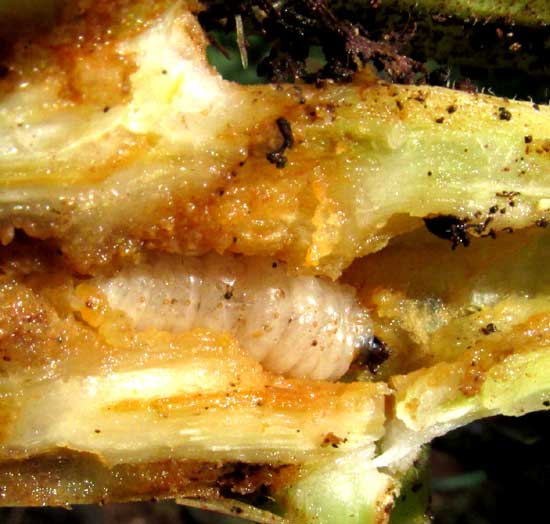Excerpts from Jim Conrad's
NATURALIST Newsletter
from the July 16, 2017 Newsletter issued from Rancho Regenesis in the woods ±4kms west of Ek Balam Ruins; elevation ~40m (~130 ft), N20.876°, W88.170°; north-central Yucatán, MÉXICO
SQUASH VINE BORERS
In March I planted some Zucchini seeds, which sprouted vigorously and in just a couple of weeks produced robust plants bearing big, orange, male flowers. Within another week the first female blossoms appeared, bearing miniature zucchini fruits, the ovaries, at their bases. Then armyworms defoliated the plants and ate the stem tips from which future leaves, flowers and fruits were to come. I pulled up the plants.
This week just as my Zucchini squashes' female flowers were appearing with their tiny zucchinis at their bases, the plants overnight became pale and wilted. I parted their leaves I saw what's shown below:

The brownish item at the picture's bottom, center, is the very sick stem. Notice that it's split in places, has holes here and there, and is generally covered with brown, crumbly "frass." Frass is a kind word for caterpillar poop. Seeing all this, I knew my plants were doomed again, for they'd been discovered by Squash Vine Borers, MELITTA CURCURBITAE, occurring in gardens worldwide. To confirm the diagnosis I pulled up a plant and split its main stem down the center, and saw what's shown below:

The stem has been hollowed out and is full of brown, crumbly frass. A little more slicing with my penknife and I found two Squash Vine Borer grubs at work, shown below:

Those are small, early-instar grubs. A much bigger one not far from metamorphosing is shown below:

So, the white, grubs shown in the pictures are larvae of a kind of clearwing moth -- one with a mostly reddish body and slender, blackish wings held over the back, so at first glance it looks more like a wasp than a moth. The moth also is unusual because it flies during the day, not at night. When the moths find an appropriate member of the Squash/Pumpkin/Cucumber Family, the Cucurbitaceae, it lays its eggs at the plant's base. About a week later the eggs hatch.
The resulting larvae enter the stems, burrow through their centers, thus blocking the flow of water to the rest of the plant. Larvae feed for four to six weeks, then exit the stems, burrow into the soil, and form a pupa inside a cocoon. In the North, the pupal stage passes through the winter, and then the next summer a clearwing moth emerges from the cocoon, and the cycle starts all over. I'm unsure how the cycle develops in the tropics where there's no winter.
Squash Vine Borers are hard to deal with. Spraying or powdering the vines does no good because the borers don't feed on the plant's surface.
Here's the main advice people give for dealing with them:
I'm guessing that, at least during the rainy season, I won't be growing many Northern-type squash.